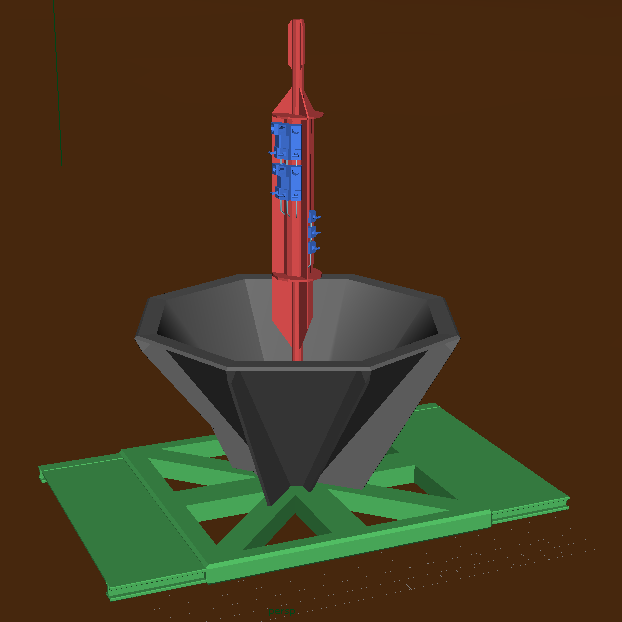
from cylinders to CORKs
What is a computer graphics artist like me doing on board the JR (besides eating lots of cookies and annoying scientists with my distinct lack of Earth science knowledge)? Well, let me show you.
As with any worthwhile endeavor, in animation, planning is key. My first task was to produce a storyboard, which is basically a page with small thumbnail sketches of the camera shots that I envision for the animation. I’m obviously not going to use a real camera, but in CG (computer graphics) software packages we use conceptual cameras that mimic their real-world counterparts to capture images. In CG, we borrow lots of terms and ideas from traditional filmmaking.
My storyboard was just a preliminary way to ‘think through’ the animation and communicate my vision to other people. In large scale productions, storyboards can be extremely detailed with specific frame numbers for each shot and a precise listing of assets required.
My next step was to create the seafloor and the CORK components inside a CG ‘world’, or scene. I trekked out to the deck where the CORKs are stored (after donning my PPE of course) to get a good look at them and take reference photos. It’s a unique and very cool opportunity to get up close and personal with the objects I’m modeling- usually I’m just modeling some character I dreamed up, or working with reference images I gathered from the Internet.
Modeling is the creation of virtual objects in a CG scene, and there are several different ways to go about it. Since the CORKs and their components are relatively simple geometric shapes, I went with the simplest method: polygon modeling. This is where you represent the surface of an object using a mesh of polygons (usually quadrilaterals or quads) with attached vertices. The process is to start with a primitive, or simple predefined shape (i.e. cylinder for the CORK), and then subdivide the edges and move, rotate, and scale the vertices in 3D space to form the details. It’s a lot like traditional sculpting in that you start with an undefined mass and then have to coax what you want out of it.
.png)

I created the main CORK cylinder, and then added the re-entry cone and platform and the various instrument bays. On the closeup, you can see the edges of each face, or polygon, in the mesh. I worked closely with the reference images as I modeled, but I had to strike a balance between accuracy and comprehensibility. If I had modeled every little detail of every component, the models would be very hard to understand (not to mention I’d never finish this by the end of the expedition).
As an aside, basically everything in CG is math. Well, everything in the world is math, but CG turns math into awesome in a fairly straightforward manner. So kids, if you’re sitting in math class wondering how vectors and matrices could possibly relate to something interesting, I promise that they do. Try to stop paying TI-83 games and pay attention.
Once I finished the whole CORK, I chopped it in half (far easier to do in CG than real life, fortunately) and set up my cutaway scene with the borehole and casings and everything:

After talking with Andy, I still have several tweaks to make but the bulk of the modeling is finished, and I’m quite pleased. My next step is to work on the surfacing of the objects, which involves synthesizing materials (using, you guessed it, math!) and texture mapping images. The colors right now are just to distinguish the geometry, it’s not how the final animation will look at all. I’ll also set up the lighting in the scene. CG lights are close analogues of real-world lights, so CG lighting can be really interesting and cool.
And that, friends, is what I do all day. That, and construct remotely-operated-vehicles, look at radiolarians and minerals with microscopes, help perform calibration experiments, closely examine rocks with magnifying glasses, and decorate styrofoam cups. Oh, and eat cookies. It’s a rough life on the JR, I tell ya.
P.S. I was just kidding, the scientists are absolutely wonderful about answering my questions and teaching us stuff! It’s like I’m having my own personal mini-semester in geology, oceanography and micropaleontology. I even found an introductory geophysics textbook on board for some light bedtime reading. Watch out world! I’m going to figure out how you work.
